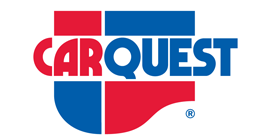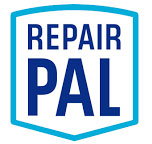
Archive for February 2024Keeping Your Cool (Coolant System)Posted February 25, 2024 9:26 AMNo matter what the weather is like outside, your internal combustion engine expects to keep its cool all the time, even when it's really cold. That's because engines create the power that moves you to your destination by a series of tiny explosions of a fuel and air mixture. In turn, that generates a lot of heat in a small space. Your vehicle has a complete cooling system with a lot of different parts that work together to keep the temperature at a point where the metal engine parts won't heat up enough to warp. Its lifeblood is coolant, a liquid that circulates through the engine (and, in most vehicles, the transmission, too) through a series of hoses and tubes. In order to get rid of the coolant's heat, your vehicle has a part you probably recognize: the radiator. It does what its name proclaims: radiates heat. The radiator has a series of thin metal fins that coolant goes through, and when outside air passes over them, the heat is dissipated from the radiator into the air. The water pump (which is technically a coolant pump) is what propels the coolant where it needs to go. When there's a problem in the coolant system, it may because it's leaking somewhere. A few things to look out for are the temperature gauge heading into the hot, or red, zone, fluid leaks under your vehicle, or the sweet smell of coolant under your vehicle after it's been parked. If your vehicle has any of those signs, bring it in so we can check things out. A technician will inspect the water pump and hoses for any signs of leaks. They'll also look for leaks or holes in the radiator core or cores. One other potential trouble spot is the radiator cap that can sometimes fail to keep the required pressure in the radiator. Once the problems are fixed, they'll add the correct coolant and you'll be on your way. We want you to always keep your cool. Triple A Automotive
Water Everywhere (Clogged Drains)Posted February 18, 2024 1:08 AMIt's bad enough when you mistakenly leave a window open in your vehicle on a rainy day and you find your carpet soaked. But what in the world is going on when your windows are closed tight, not leaking and you STILL wind up with wet carpet? The answer could be something you might not even know your vehicle has. And the answer is? Drains. And those drains can get clogged. Yes, your vehicle has several drains with tubes or hoses attached to them that you really never see. There are some in and around the hood that channel rainwater down to the ground. There are some that take condensation from the air conditioner and allow it to flow outside. And if your vehicle has a retractable sunroof or moon roof, there are small drains at each corner that connect to tubes that go through the vehicle body down to an exit near the ground. Considering all the leaves, dirt, dust and other debris your vehicle encounters on a daily basis, it's not surprising that these drains can get blocked. Then when it rains, that water winds up going to the place of least resistance. Sometimes, that's inside the cabin where it shows up as wet carpeting. So, what's the solution? You may be tempted to see if you can clean out those drains yourself. But there are many people who have tried blowing condensed air in the drains only to find that they literally blow the tubes off of their connections inside the vehicle's body. Reattaching those can be a time-consuming, labor-intensive, expensive proposition. A trained technician has the equipment and knowledge to clear out those drains properly. To prevent clogged drains, regular maintenance is the key, so when your vehicle is in for other periodic maintenance like oil changes and tire rotations, the technician can make sure all drains are clear and flowing like they should. Triple A Automotive Refresh Your Brakes (Brake Fluid Exchange)Posted February 11, 2024 8:53 AMBrakes are one of your vehicle's most important safety components, and you may have noticed that they don't stop as surely as they used to. Maybe it takes you applying a little more pressure to them than before, or perhaps you get the feeling that they're not stopping you as quickly. Those could be signs that your brake fluid needs changing. Hydraulic brake systems use a fluid that enables the brakes to apply their stopping power to the wheels. That fluid can wear out, degrade, become contaminated or pick up air and moisture. All those can eventually contribute to brakes that feel sluggish. Driving with old, worn-out brake fluid may also shorten the lifespan of other braking components. Our technicians can evaluate your brake fluid to see if it needs changing. Your vehicle's manufacturer recommends how often that should be done, and when it needs changing may depend on how and where you drive. Our technicians can check the condition of your brake fluid when you have your regular oil changes. A technician will remove the old fluid and replace it with the type the vehicle manufacturer recommends. They will also bleed the air from the brake system, check it for any leaks and inspect other components such as the hoses, rotors and brake pads. Because brake fluid is combustible and toxic, it's important that it be disposed of properly so as not to create environmental damage. And just a reminder that if you continue to drive with old, contaminated brake fluid that's past its lifespan, other components of your brake system can fail. Let's face it. Brakes that don't stop you when you need them can endanger your life—and the lives of those near your vehicle. Triple A Automotive Not Too Hot and Not Too Cold (Temperature Gauge)Posted February 4, 2024 7:43 AMYou know your body temperature is supposed to be 98.6 degrees F, 37 degrees C. Your vehicle has a normal temperature, too, and if you pay attention to it, that can save you some big headaches down the road. Many vehicles have a temperature gauge on the dash that takes the temperature of the engine's coolant. Some have a thermometer symbol, some read C-H (cold to hot). Many will have a red zone that shows when water temperature is getting into the danger zone. Others are digital and have a red warning light that signals overheating. And some vehicles have a light that goes on when the engine temperature is out of the normal range. If your vehicle has a gauge, pay attention to it. If you need help locating it, ask one of our Triple A Automotive experts to give you a quick explanation. Chances are when the vehicle has been running for 15 minutes or more, the temperature gauge will settle into its own "normal" zone, often just below the midway point. If you have a digital readout, remember what that "normal" temperature is. Here's why. At any point when you're driving, the temperature gauge is the quickest way to get a sense that the engine is running the way it should, a quick health checkup, as it were. Say you're on a 3-hour trip, glance at that gauge every hour or so. It should always be in the same spot. If it starts to move one way or the other, you may be able to catch a problem before it gets serious. Pay special attention to it moving into the hot zone. The needle on the gauge is the easiest and least distracting way to see an engine heating up, but on a digital gauge, start paying attention if the temperature reaches 240ºF/115ºC or more. Remember, though, that just because the gauge reads "hot" doesn't mean your engine is on the verge of burning up. It could be a bad sensor and the engine will be at a normal temperature. But it also could be a failing water pump, coolant leak or thermostat. By pulling off the road and observing your engine, it will give you a pretty good idea if it's running hot or not. If the gauge is too "cold," it could be a broken gauge or thermostat sticking open. Usually being in the cold range isn't as worrisome, but you should have it checked out since other systems may be affected. Heat is one of a vehicle's worst enemies, especially when it comes from within. Know your vehicle's normal temperature and keep an eye on it.
| ||
SearchArchiveApril 2016 (16)May 2016 (5) June 2016 (4) July 2016 (4) August 2016 (5) September 2016 (4) October 2016 (5) November 2016 (4) December 2016 (4) January 2017 (5) February 2017 (4) March 2017 (4) April 2017 (4) May 2017 (5) June 2017 (4) July 2017 (5) August 2017 (3) September 2017 (3) October 2017 (5) November 2017 (4) December 2017 (2) January 2018 (5) February 2018 (4) March 2018 (4) April 2018 (5) May 2018 (4) June 2018 (4) July 2018 (5) August 2018 (4) September 2018 (5) October 2018 (4) November 2018 (4) December 2018 (5) January 2019 (5) February 2019 (4) March 2019 (5) April 2019 (4) May 2019 (4) June 2019 (5) July 2019 (4) August 2019 (4) September 2019 (5) October 2019 (4) November 2019 (4) December 2019 (5) January 2020 (5) February 2020 (4) March 2020 (5) April 2020 (4) May 2020 (5) June 2020 (4) July 2020 (4) August 2020 (5) September 2020 (4) October 2020 (4) November 2020 (5) December 2020 (4) January 2021 (6) February 2021 (4) March 2021 (4) April 2021 (4) May 2021 (5) June 2021 (4) July 2021 (4) August 2021 (5) September 2021 (4) October 2021 (5) November 2021 (4) December 2021 (4) January 2022 (6) February 2022 (4) March 2022 (4) April 2022 (4) May 2022 (5) June 2022 (4) July 2022 (5) August 2022 (4) September 2022 (4) October 2022 (5) November 2022 (4) December 2022 (4) January 2023 (5) February 2023 (4) March 2023 (4) April 2023 (5) May 2023 (4) June 2023 (4) July 2023 (5) August 2023 (4) September 2023 (4) October 2023 (5) November 2023 (4) December 2023 (5) January 2024 (5) February 2024 (4) March 2024 (5) April 2024 (3) | CategoriesMaintenance (43)Fuel System (42)Alignment (13)Tires and Wheels (34)Windshield Wipers (6)Fluids (14)Serpentine Belt (5)Inspection (8)Exhaust (8)Safety (6)Transmission (8)Emergency Items (1)Service Standards (8)Cooling System (15)Air Conditioning (11)Drive Train (9)Service Intervals (8)Shocks & Struts (7)Battery (15)Monitoring System (2)Suspension (3)Alternator (2)Brakes (10)Parts (7)Differential Service (2)Headlamps (4)Cabin Air Filter (5)Diagnostics (5)Automotive News (5)Steering (8)Warranty (1)Engine Air Filter (2)Fuel Economy (8)Dashboard (3)What Customers Should Know (50)Keys to a long lasting vehicle (4)Check Engine Light (5)Timing Belt (6)Auto Safety (6)Older Vehicles (3)Winter Prep (4)Fuel Saving Tip: Slow Down (2)Diesel Maintenance (1)Trip Inspection (2)TPMS (1)Tires (6)Tire Rotation and Balancing (1)Safe Driving (1)Water Pump (1)Fuel Pump (1)Wheel Bearings (1)Oil Change (4)Spark Plugs (2)Brake Service (1)Transfer Case Service (1) | |
What our clients are saying about us
We have established longterm and stable partnerships with various clients thanks to our excellence in solving their automotive needs!
Some of the nicest people I have ever met!! Did an amazing job!!!10/10 would recommend!!!

This business has good people, they are transparent with prices and issues with your car and have been helpful to me many times. I highly recommend their services.









